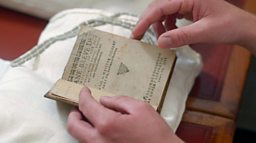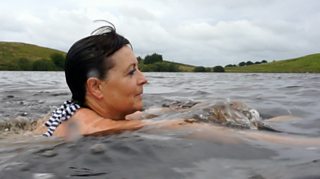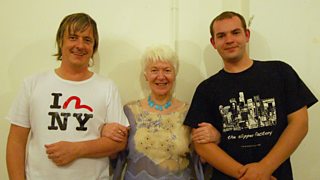Finding the right words for a 16th Century public health crisis
A 450-year-old book reveals what ordinary Scots were told about the plague.
In a time before daily televised press conferences and social media sharing, spreading the word about public health had to be done via a different route.
As new documentary Rebel Tongue reveals, when an outbreak of plague hit the country in the mid-1560s, one physician found that the best way to reach as many people as possible was to publish medical advice in the Scots language.

Medical advice in Scots
A publication from 1568 reveals the era's medical advice for contagious diseases.
Publishing the advice in common Scots as it was spoken on the street meant that it could be understood by ordinary men and women across the country.
We may not recognise some words or use the same spellings today, much of it can be easily deciphered.
The following excerpts highlight author for identifying signs of the plague:
"First gif the exterior partis of the bodie be caulde, and the interior partis of the bodie vehement hait."
The patient will display a "greit dolour of heid with heavynes, sollicitude and sadnes of mynd".
Then,"last of all and maiste certane, gif with constant fever, by the earis, under the oxstaris, or by the secrete membres maist frequentlie apperis a postumis callit Bubones, whithout ony other manifest cause or gif the charbunkil apperis hastelie in ony other part".
We know now that in those days there was no cure for the plague, but Skeyne advised his readers to treat symptoms of the disease with a variety of plant-based tinctures and, most importantly, a "returne to God".

On ����ý iPlayer
-
![]()
Rebel Tongue
Alistair Heather sets out on a mission to reclaim the Scots language.
Latest features from ����ý Scotland
-
![]()
'Wild swimming helps me process the grief of losing my son'
The benefits of cold water therapy.
-
![]()
Winter adventures are appealing, but an expert advises caution
Trips in winter require particular knowledge and skills.
-
![]()
The rescuers: Why volunteers risk their lives in mountain emergencies
Landward meets members of the Cairngorm Mountain Rescue Team.
-
![]()
‘Look for the light’ – practical tips to help you through another winter with SAD
Useful advice and tips to combat low moods at this time of year.
-
![]()
How you could be a binge drinker without even knowing
Binge drinking is classed as fewer units than many people may realise.
-
![]()
How chocolate biscuits and drama classes helped one man leave prison behind
The healing power of creativity.
-
![]()
'When people believe in you, it’s life-changing'
Author Graeme Armstrong revisits the man who helped turn his life around.
-
![]()
The 'breath-taking' display of US birds swept on to British soil
Recent storms have brought rare birds to our shores.
-
![]()
Six things we learned about Alan Cumming on Take the Floor (Spoiler: includes accordions)
The actor spoke to Take the Floor's Gary Innes.
-
![]()
How street gangs trap young men in a dangerous cycle of violence
The almost inescapable pull of life in a gang.
-
![]()
Why stylist Gok Wan believes there's no such thing as bad fashion
The fashion expert says we should stop following rules and do what feels right.
-
![]()
Is sending a CV still the right way to apply for a job?
They've been central to job applications for years, but are they worth it?
















